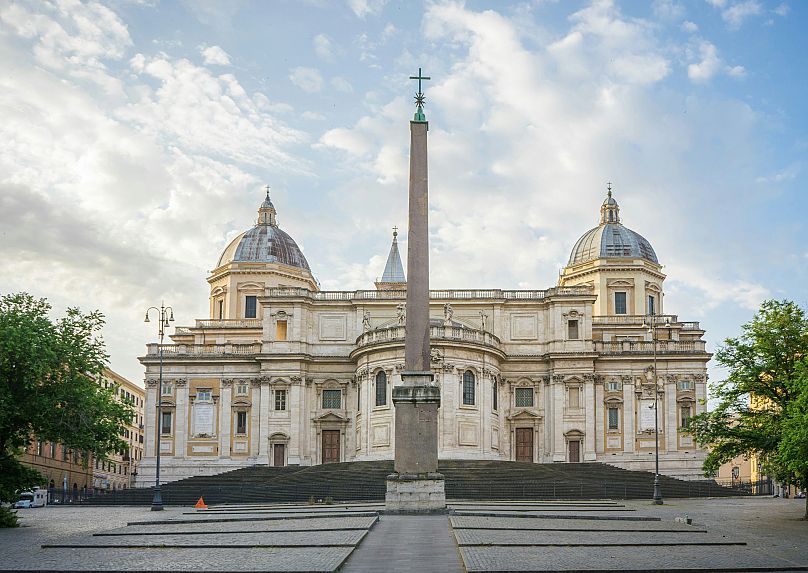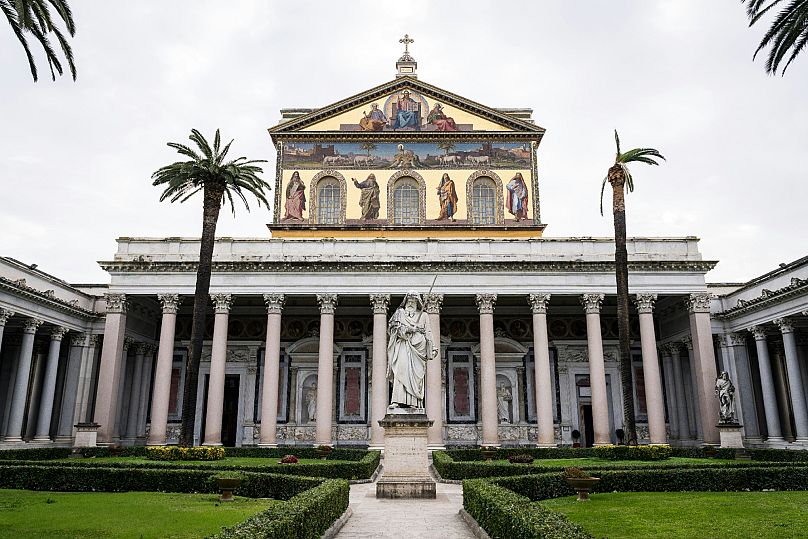Embark on This Epic Pilgrimage Route Around Rome to Discover Its Seven Most Magnificent Churches
Rome stands as a marvel of spiritual wealth, drawing more than 30 million tourists each year, with 2025 marking an exceptionally important time for this birthplace of Catholicism.
The Vatican is celebrating a Jubilee Year with dozens of events. The funeral of Pope Francis and the selection of a new pope have also brought attention to the Eternal City.
When you're going to Rome to admire its numerous religious landmarks, it might feel challenging to decide where to begin.
For a particularly meaningful way to visit Rome’s major churches - and to sidestep the crowds - try following in the footsteps of a 16th-century saint.
Even though you might not think so, the Eternal City is a pleasure to discover on foot.
Actually, according to a recent list made by GuruWalk, Rome was ranked number one as the most walkable city globally. They described it as an "open-air museum that should be fully experienced through each careful step."
Walk in the footsteps of a 16th-century saint
St Philip Neri came up with the idea for the Pilgrimage of the Seven Churches circa 1553, and following this path has since turned into one of Rome ’s oldest religious traditions.
You can make minor adjustments, yet it covers approximately 25 kilometres and winds through the entire city among the seven main basilicas.
Starting your journey at daybreak can turn this into quite an all-encompassing daily adventure. Alternatively, break it up across multiple days and conveniently use public transportation to get back to where you paused earlier.
Admire a sculptural tour de force and Byzantine icons
It is a good idea to begin the route at St Peter’s Basilica. Given that the church is very busy Right now, it's smart to get in line as soon as you can to have the shortest wait time.
This will make it simpler to appreciate the artistic gems within the vast church, ranging from Michelangelo’s Pietà statue to Gian Lorenzo Bernini’s ornate bronze Baldacchino which crowns the main altar.
To see sights On your way during daytime and within operating hours, it's ideal to head for the Basilica of Santa Maria Maggiore next, which is roughly an hour's stroll from here.
The path leads you by the massive Castel Sant'Angelo and across the matching bridge adorned with draped stone angels offering vistas along the Tiber River.
The charmingly cobblestoned Via dei Coronari guides you towards Piazza Navona, where you can witness the dramatic water shows of Bernini’s Four Rivers Fountain. Continuing along this picturesque route will bring you past the grand facade in front of the magnificent Trevi Fountain .
An additional 20-minute walk will bring you to the second of Rome’s principal churches, the site where Pope Francis was laid to rest.
Santa Maria Maggiore serves as an important site for Marian devotion, housing a revered Byzantine icon depicting the Virgin Mary titled Salus Populi Romani, also recognized as the Protector of the Roman People.
Search for holy artifacts belonging to saints and martyrs
A thirty-minute stroll, going past the Termini train station and alongside the expansive Via dei Ramni, will bring you to the church of San Lorenzo Fuori le Mura.
The building was reconstructed after bombing during the Second World War, but it lies on the ancient site of the martyrdom of St Lawrence, who was roasted alive on a grill in 258. The saint’s relics are housed inside.
Another half-hour stretch leads to the Basilica of Santa Croce in Gerusalemme, passing the ancient The Roman Gate of Major Aqueduct and water channels along the way.
The light-colored Baroque building was conceived as an enormous shrine and contains many significant Christian artifacts retrieved by Saint Helena, the emperor Constantine’s mother, during her journey to Jerusalem in 325.
Included among these relics are the Holy Nail, pieces of the True Cross, a thorn from Jesus' crown, and a fragment of Saint Thomas the Apostle’s finger bone.
Starting from this point, walk alongside the historic Aurelian Walls via Via Carlo Felice for about 15 minutes until you reach the grand Papal Basilica of San Giovanni in Laterano.
This is the cathedral of Rome, also known as the oldest and most significant basilica in the Western region.
Dedicated in the 4th century, this place contains the sacred remains of the heads of Rome’s apostles, Peter and Paul, which are displayed under an ornate gold Gothic canopy above the high altar used by popes.
Explore the countryside charms of Rome along the historic Via Appia Antica.
The next stretch to the sixth church takes just over an hour, passing along the 3rd-century Aurelian Walls and down the Via Appia Antica, an ancient road where you lose the city for a moment and seem transported to bucolic countryside.
The Basilica of San Sebastiano Fuori le Mura is simpler, at least compared to the majesty of the previous churches.
It contains an arrow and part of the column from St Sebastian’s martyrdom and the Bust of the Saviour, the last sculptural masterpiece by Bernini, rediscovered in 2001 in the adjacent convent.
The last church is arrived at via the Via delle Sette Chiese, which gets its name from the seven-church pilgrimage.
The peaceful road Passing through Rome’s outer limits brings you to the Basilica of San Paolo Fuori le Mura, which stands as the city's second largest church. Established in the 4th century, it underwent reconstruction in a neoclassical design after being damaged by a fire during the 1800s.
Be sure to check out the cloister, a remnant from the 13th century, along with its elegant pillars adorned with mosaics.
If you coordinate your schedule properly, you could subsequently meander For an evening painted in hues of sunset as we trace our steps alongside the Tiber once more, taking a slight detour through the charmingly intricate streets of Trastevere, before making our way back to St Peter’s.


Post a Comment for "Embark on This Epic Pilgrimage Route Around Rome to Discover Its Seven Most Magnificent Churches"